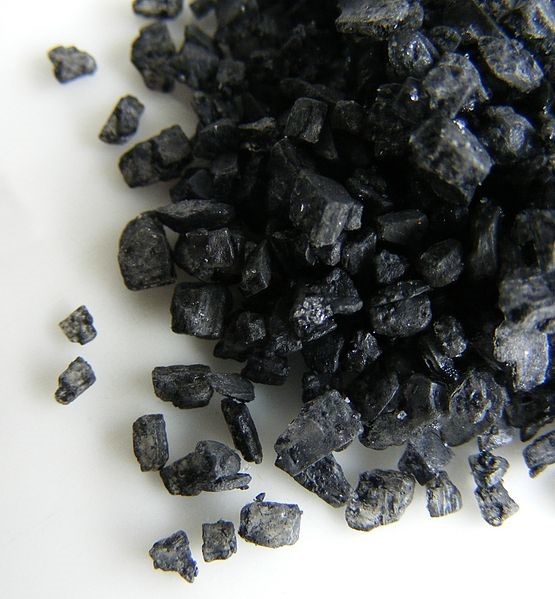A little guide to learn something more about the perfect addition to tasty healthy and exotic recipes!
The Indian black salt, also known as “namak” or “sanchal”, is a volcanic salt commonly used in India, Pakistan and other Asian countries. The salt has, in fact, a dark gray and pink color, thanks to the presence of iron and other minerals.
Namak has been used as a condiment for many hundreds of years in the Asian countries surrounding the Himalayan mountains. It was originally obtained from some natural volcanic mines in northern India and Pakistan, as well as in the salt lakes of Sambhar.
It meets the favor of chefs and enthusiasts for its particular taste, slightly sulfurous, which has sometimes been compared to that of hard-boiled egg yolk. It has long been employed by local populations in Ayurvedic medicine. To date, however, no scientific research has confirmed the health properties that have been attributed to this Indian salt.
The composition of the Black Salt
Indian black salt is mainly composed of sodium chloride, the same component that is known as kitchen salt. All the other components are present “in traces” and, for the most part, they are sulfates, sulfides, iron, and magnesium.
Indian black salt is considered a refreshing spice in Ayurvedic medicine and is recommended for many health problems such as constipation, indigestion, heartburn, swelling, flatulence, goiter, insufficient sight and nervousness with mood swings. In India and neighboring countries, namak salt is also recommended for those who should follow a low sodium diet: in many cases, this salt was considered to be hyposodic. In reality, the contribution of this element is however very high and the analyzes have confirmed that the synthetic black salt has a sodium content very close to the normal table salt.
In general, in case of high blood pressure, follow the instructions of the attending physician to avoid taking the risk of considering hyposodic some flavorers that in reality are not. As a general rule, it is important to limit the sodium intake to 2 g per day contained in a teaspoon of salt. In addition to what is used for seasoning, it is essential to consider the salt hidden in ready-to-eat foods.
Indian black salt is among the most used in Indian cuisine. It can also be found as a flavoring agent in preserved vinegar, yogurt, salads and even fruit-based preparations. In the summer months, it is also used as a flavoring of remineralizing fresh drinks. In the West it is especially appreciated by those who follow the vegan food style: it is used above all as a flavoring agent for recipes based on tofu, mixed vegetables or soups.
The particularity of taste makes it also suitable to replace the common kitchen salt, in the preparation of pasta for pies, aromatic bread and to flavor the marinating of fish. Even raw it ensures a pleasant taste and lends itself to salad rice and vegetables. So, basically, adding black salt to our recipes is going to be so good for our bodies in so many ways and, most of all, we are going to bring some exotic vibe to our dishes too. How beautiful is that?

Sorry,
My mindset when eating is to assume that anything black in my soup has to be a bug ?
No comment, but a question: if you are allergic to sulfuric additives, should this item be avoided?
Where do we purchase this black salt??
Where I can get the black salt?
I’m really interested in buying this salt. Where can it be bought?